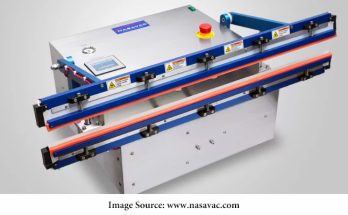In today’s fast-paced world, manual handling tasks are an integral part of various industries. Whether it’s lifting heavy objects, pushing carts, or transferring materials, employees frequently find themselves engaged in physically demanding tasks. However, such tasks also pose a significant risk of injury if not executed correctly. In this blog post, we will delve into the world of effective manual handling solutions, exploring ways to ensure employee safety and enhance productivity.
Understanding the Importance of Effective Manual Handling Solutions:
Manual handling-related injuries can have long-lasting consequences for both employees and businesses. From musculoskeletal disorders to strains, sprains, and fractures, the impact can be significant. In fact, injuries account for a substantial portion of workplace accidents worldwide. This highlights the need for effective solutions to address these challenges and create a safer work environment.
Evaluating Risk Factors:
Before implementing any manual handling solutions, it’s essential to identify and assess the risk factors involved. This includes evaluating the weight and dimensions of the objects being handled, as well as the frequency and duration of the tasks. By understanding these factors, organisations can determine the most appropriate solutions to mitigate the risks and safeguard their employees.
Providing Proper Training and Education:
Employee training and education play a crucial role in ensuring effective techniques to handle the tasks manually. By equipping employees with the knowledge and skills required for safe lifting, carrying, and moving of objects, organisations can significantly reduce the chances of injuries.
Training sessions should cover proper body mechanics, correct lifting techniques, and the importance of using mechanical aids when necessary.
Implementing Ergonomic Solutions:
Ergonomics plays a pivotal role here. By integrating ergonomic principles into the design of workstations, tools, and equipment, organisations can minimise the strain on employees’ bodies. This includes implementing adjustable workstations, providing ergonomic tools and accessories, and ensuring proper posture during manual tasks. Small changes like these can have a substantial impact on reducing the risk of injuries and improving overall workplace safety.
Utilising Mechanical Aids and Technology:
Incorporating mechanical aids and technology is another effective way to enhance manual handling solutions. From forklifts and conveyors to lift assist devices and exoskeletons, various options are available to ease the burden of manual handling tasks.
These aids not only reduce the risk of injuries but also enhance efficiency and productivity. Organisations should identify the appropriate mechanical aids for their specific requirements and invest in these tools to empower their employees.
Creating a Culture of Safety:
It requires fostering a culture of safety within the organisation. This entails encouraging open communication about manual handling challenges, providing regular feedback and support, and conducting ongoing risk assessments.
Furthermore, organisations should promote a positive mindset towards safety, ensuring that employees feel empowered to speak up about potential hazards and suggest improvements.
Monitoring and Evaluation:
Continuous monitoring and evaluation are essential to determine the effectiveness of manual handling solutions. By conducting regular audits, organisations can identify any gaps or areas for improvement, and take corrective actions accordingly.
Additionally, feedback from employees should be actively sought and utilised to refine existing solutions and introduce new practices to enhance safety.
Protecting Your Most Valuable Asset: Employee Well-Being
By prioritising the safety and health of employees, businesses can cultivate a positive work environment, increase morale, and reduce absenteeism due to injuries. More importantly, when employees feel valued and protected, they are more engaged and productive, positively impacting the overall success of the organisation.
Innovative Solutions for Modern Challenges
Today, businesses are increasingly turning to innovative technologies and solutions to address these challenges. Automation, robotics, and augmented reality are revolutionising the way tasks are performed.
From automated guided vehicles for material transport to wearable exoskeletons that support and protect workers’ bodies during lifting and carrying, these solutions are shaping the future of manually handling the tasks.
Conclusion:
In conclusion, effective manual handling solutions are imperative for creating a safe and productive work environment. By placing a focus on proper training, ergonomic solutions, mechanical aids, and a culture of safety, organisations can significantly reduce the risk of injuries. Investing time and resources in these solutions not only protects employees but also enhances overall business outcomes. Remember, when it comes to manually handling, it’s about lifting the weight off your shoulders – both literally and figuratively.



